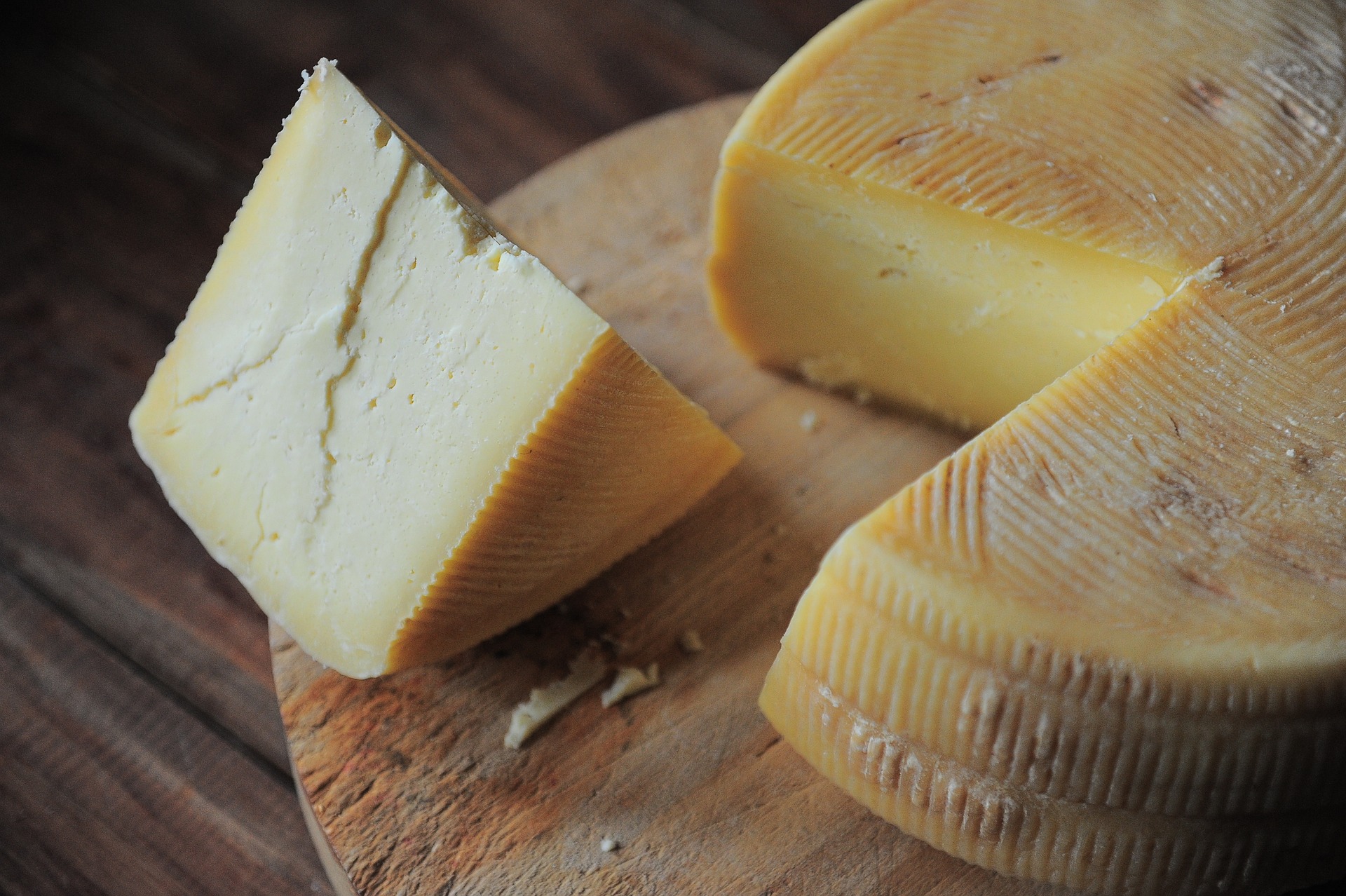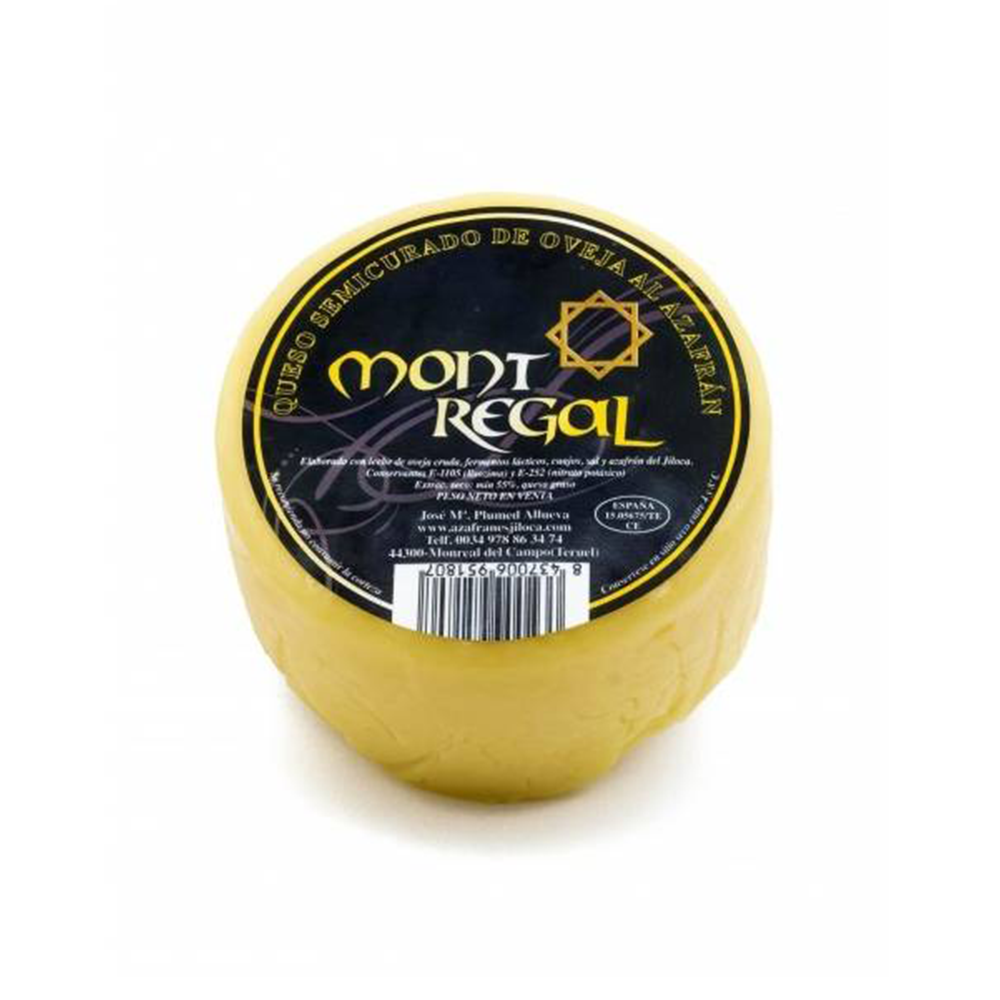- Curiosities
- 0 likes
- 17787 views

ELABORATION OF CURED CHEESE
The cured sheep's cheese is a cheese with the distinctive of its intense flavor. Made with raw sheep's milk and with a resting time that includes between 3 and 6 months; in this way, its flavor and texture are enhanced.
HISTORY of Cured Cheese
Today, our tables abound with different amounts of cheese, with very varied textures, surprising flavors...
But when and who made the first cheeses? To do this, we have to go back to the Neolithic period, approximately 15,000 years ago. The inhabitants of that time domesticated goats and sheep in order to obtain their milk as food. A great discovery they made was that when they let the milk rest for a few hours, it curdled. And, in addition, they also discovered that in the stomach of the kid or the lamb there is a digestive enzyme that is rennet.
Through observation and, above all, curiosity and the need to survive, Neolithic men and women were able to learn about the process of creating cheese.
PROCESS OF ELABORATION AND CURING of the Cheese
The objective of this post is that they have the necessary information to know the process of obtaining cured sheep's cheese. It is a process that requires dedication and is complex. In the current market, kits are sold to prepare cured cheese at home, since they contain all the ingredients and material necessary to carry it out.However, the traditional cured sheep's cheese, made in the usual cheese factory, will undoubtedly have an indisputable flavor.
Therefore, I recommend that instead of making it at home, you buy this type of product in a specialized cheese shop. You can see the difference yourself.
Today, our tables abound with different amounts of cheese, with very varied textures, surprising flavours... But when and who invented the first cheeses? To do this, tenAs I mentioned earlier, the process is complex and is based mainly on the conversion of sheep's milk into a cheese. To do this, the first thing to do is treat the milk. What does it mean to treat milk? It means that all those foreign substances that can harm our body have to be eliminated from it. Once these particles have been removed and, if the cheese requires it, more cream is added, the milk is homogenized so that the final texture is uniform. It is then transferred to the processing vats. When we have transferred the milk to the production vat, what is done is to raise the temperature to about 35ºC and, depending on the type of cheese being made, lactic ferments or rennet are added. Thus, the milk coagulates, since the function of the rennet is that, obtaining a cheese in a semi-solid state. Next, the semi-solid cheese will be cut using instruments called liras. Depending on the type of cut that is made, one type of cheese or another will be made. The cut curd is called “grain”. The grains obtained continue to be worked in the processing vat so that the whey is removed from them, proceeding to "draining". We have to go back to the Neolithic period, approximately 15,000 years ago. The inhabitants of that time domesticated goats and sheep in order to obtain their milk as food.A great discovery they made was that when they let the milk rest for a few hours, it curdled. And, in addition, they also discovered that in the stomach of the kid or the lamb there is a digestive enzyme that is rennet.
Through observation and, above all, curiosity and the need to survive, Neolithic men and women were able to learn about the process of creating cheese.
As I mentioned before, the process is complex and is mainly based on the conversion of sheep's milk into a cheese. To do this, the first thing to do is treat the milk. What does it mean to treat milk? It means that all those foreign substances that can harm our body have to be eliminated from it. Once these particles have been removed and, if the cheese requires it, more cream is added, the milk is homogenized so that the final texture is uniform. It is then transferred to the processing vats. When we have transferred the milk to the production vat, what is done is to raise the temperature to about 35ºC and, depending on the type of cheese being made, lactic ferments or rennet are added. Thus, the milk coagulates, since the function of the rennet is that, obtaining a cheese in a semi-solid state. Next, the semi-solid cheese will be cut using instruments called liras. Depending on the type of cut that is made, one type of cheese or another will be made. The cut curd is called “grain”.The grains obtained continue to be worked in the processing vat so that the whey is removed from them, proceeding to "draining".
The different grains, already without whey, are deposited in different molds to be able to carry out the next phase, which is pressing. This is done in order to give the cheese a specific shape and remove the whey and air that still remains between the curd grains.
The next step is the salting of the cheese. What is room for? The answer is curious. The cheese is salted to prevent the growth of bacteria that are harmful to humans. In addition, salt also helps eliminate what remains of the whey, enhance the flavor and is also responsible for forming the rind of the cheese.
At this point, we already have a drained and salted cheese, so it can be taken to the maturation chamber. In these chambers, the temperature, humidity and aeration of the cheeses are highly controlled so that they undergo an ideal curing process. This phase is of special importance, because thanks to it the texture, flavor, aroma and consistency of the cured cheese will be obtained.
Once the curing process is over, which usually lasts between 3 and 6 months, as mentioned at the beginning of the post, the cheese can now be purchased and enjoyed.
As you can see, making this type of product requires dedication, time, knowledge and patience. Thanks to all these phases, an exceptional cured cheese is obtained, which can be served both as an appetizer and accompanied with bread or, also, with a little jam. But the recipes are best left for another post... Until here we would have the process of making the cured sheep's cheese. But, we have to highlight an important part that is sometimes forgotten: its conservation and the cutting of the cheese. The conservation of the cheese is essential, since with it we guarantee that its flavor, texture, intensity, aroma, consistency... To be well preserved, it requires a temperature between 10 - 12 ºC. This temperature is difficult to achieve at home, so it is recommended to keep the cheese in the fridge, cold and, in addition, cover it with olive oil every time it is cut, to prevent it from drying out.

And how to cut it? If the cheese is cold, it will be easier to cut since it will not break as easily. To cut it, we will need a large and wide knife, which allows us to cut a slice easily. With the cheese resting on a firm surface, we will position the knife on top of the cheese and exerting gentle pressure with our hands, we will cut the slice little by little. If we want to taste the cheese (for example, with spices) in all its essence, it is better that the slice is not very thin, but not very thick either. Of medium width, in this way we can take a bite and have all the aroma on our palate.With this post, you have learned how our beloved and appreciated cured sheep cheese is made. It is a complicated process, so it is better that you buy it instead of doing it at home. I assure you that the taste is completely different. The only thing you have to do is make sure that it is preserved and that it is cut correctly. Get ready to enjoy a product that is a delicacy!


